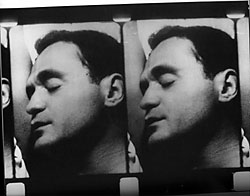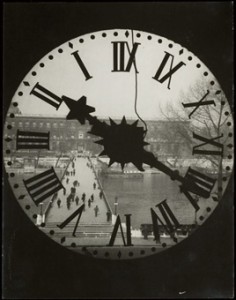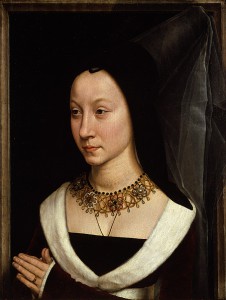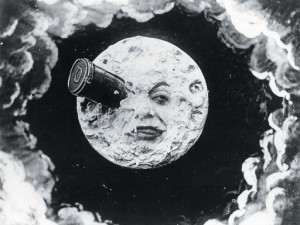Melies film recalls quite a few of the practices of early photography. In his short film the actors are moving around and walk in and out of the captured scene this is similar to photography because both video cameras and photograph cameras cannot move or pan to follow the subjects and capture the surroundings as they do today. Being known as the father of on film special effects Melies alters the film to create illusions. Photographers do the same thing with their negatives to alter the final image. He also uses multiple exposures to produce his vision. Like early photography when multiple negatives were put together to create unique images. In Melies film if you noticed there are multiple cut or stop scene where they would introduce the appearing props and smoke for disappearing props to create illusions when the film would role again so it would appear out of no where or vanish like magic. In photography you can do special effects as well but you cannot show the moving progression of an object appearing and disappearing you can only create a ghost effect with long exposure or an artistic effect by roughing up the negative. Another obvious similarity is the color, in earlier photography there also wasn’t any color used color was inputted into the film negatives much latter and then produced or developed to have color in them just like early photography. I found this film to be funny and very creative for being the first special effects film I saw a segment of this short film in the HUGO movie so I immediately knew what is was. The special effects in this film are surprisingly better then some movies that people try to produce today. I was impressed for the most part.
Contact Information
Professor Sandra Cheng
Office: Namm 602B
Office Hours: Tu/Th 9-10 am or
by appointment
Office Tel: 718-260-5003
Email: scheng@citytech.cuny.eduHelpful Links
 New York Times Arts
New York Times ArtsBlogroll
-
Recent Posts
- Re: Photographing the Beginning of the Civil Rights Movement
- Re:Discussion Topic: Street Art, Photography, and the Inside Out Project in Times Square
- Re: Tim Hetherington and Modern-day War Photography
- Response to: Tim Hetherington and Modern-day War Photography
- Photographing the Beginning of the Civil Rights Movement
Recent Comments
- Michael Lorenzo on Discussion Topic: Street Art, Photography, and the Inside Out Project in Times Square
- Michael Lorenzo on Discussion Topic: Tim Hetherington and Modern-day War Photography
- Michael Lorenzo on Discussion Topic: The Greatest War Photograph and Robert Capa
- Phalenta Pamphile on Discussion Topic: Street Art, Photography, and the Inside Out Project in Times Square
- Shantel on Discussion Topic: Photographing the Beginning of the Civil Rights Movement
Archives
Categories
Meta








